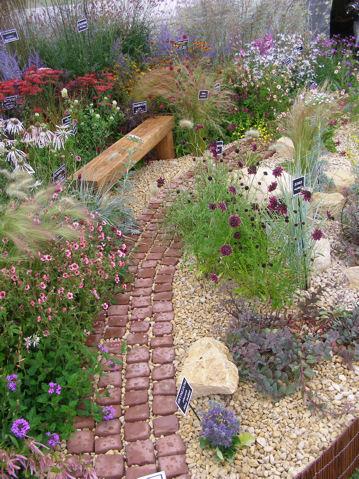Geoff from The Guide To Gay Gardening speaks to us about his gardneing ethos. The Lazy Gardener is a piece that aims to tell you the ways you can create a beautiful, but low maintenance garden.
It’s time I finally come clean with everyone. I run a small gardening business, I love being outside, I can’t enter a nursery without leaving with at least half a dozen plants, but when it comes to gardening – I’m lazy. There, I said it. I don’t know whether it’s because I’m gardening at clients’ most of the time, or because when I’m at home there’s the dog to walk, cakes to bake and Golden Girls to catch up on, but I hardly ever actually garden. I blitz every so often, perhaps once or twice a month. Beyond that, I just sit back and relax. But, I’ll let you in on another secret; there’s a few easy ways to make a garden that doesn’t requite a lot of work.

One of the best ways to create an easy to maintain garden is to throw away the ground rules when it comes to gardening. Something I’ve been passionate about for a long time is getting rid of lawns. I completely understand that there are cases when they’re necessary; when you have children, for example. Or, when you have an enormous garden and you have to create some form of feature to place your beds around. But, particularly in small gardens, eliminating the lawn saves you A LOT of work. Even my dog seems to prefer the lack of grass; she’s walked more often and I’m not yelling because she’s just run muddy paw prints all over the house.
Of course, if you don’t have a lawn, then you have to have something else. In no way am I encouraging the large-scale rolling out of decks and paving. The former can be notoriously hard to keep looking good after a few years, whilst the latter stops water getting into the earth, and that causes all manner of problems that I won’t go into. In thin gardens (mine’s only about 12ft wide), a central path bordered with two large beds allows you to maximise planting – a particularly good idea if you’re a plant hoarder like me. In larger gardens, you can divide the space into sections, using pots, borders, trellising and anything else you can think of, to create areas of gravel, paving, decking or even bark – which is great if you want to create a kids area without a lawn.
But plants grow, don’t they? So they need tending? Well, yes. And this is something you can’t get away from. However, you can choose specimens that are slow growing and don’t require a lot of effort. For lazy gardeners, annuals are, therefore, out. Unless, that is, all you want to do is scatter some seeds and let nature take its course. The approach is ideal for wildflower meadows, and also for pots and borders in the early summer when the ground is warm enough to simply let seeds geminate by themselves. A great approach when planting a lazy gardeners’ space, is to aim for slow growing flowering shrubs or herbaceous perennials. Herbaceous perennials may thrive swiftly throughout the year, but they die away in winter, making the job of a quick tidy extremely easy. 
As a gardener, I want to be out enjoying the plants, rather than having to feel the constant pressure that there’s work to do. Lawns are a HUGE time-sap, so if you don’t need one, get rid of it. Choose plants which grow slowly and don’t require a lot of maintenance. Many flowering plants, for example, require constant deadheading and are best to avoid if you know you can’t be bothered. Autumn is a fantastic time of year to re-design gardens and buy new plants too. So, if you want to be enjoying your garden in 2014, rather than buried knee deep in soil, prunings and grass clippings, take a moment now so you can laze around next summer.
